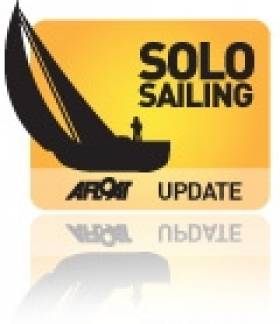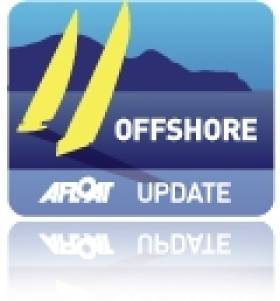Displaying items by tag: Brad Van Liew
The American skipper Brad Van Liew has won the Ocean Sprint Three from Wellington, New Zealand to Punta del Este in Uruguay after 23 days at sea.
Brad Van Liew is a self proclaimed adrenaline junkie with a vast array of extreme sports behind him. A lifelong sailor, Brad had set his heart competing in the BOC Challenge, which would in 2005 be renamed the VELUX 5 OCEANS and in 1998 his dream was realised when he competed in the Around Alone finishing third in class two. Brad lives in Charleston, South
Carolina, USA and his new yacht Le Pingouin, which he bought in France last year, has a rich racing pedigree.
The VELUX 5 OCEANS is the oldest single-handed round the world yacht race. Run every 4 years since 1982, the race is the longest and toughest event for any individual in any sport. The race is a series of five high-pressure ocean sprints within a marathon circumnavigation. The 30,000 route takes the sailors from La Rochelle FR to Cape Town SA, then onto Wellington NZ, Punta
del Este Uruguay, Charleston USA and back to La Rochelle FR, for the finish.
Further VELUX 5 OCEANS images HERE
Velux 5 Oceans: Windy Start to Ocean Sprint 3
The Velux 5 Oceans website has posted a video preview ahead of the third ocean sprint stage in the marathon round-the-world yacht race.
The third stage, which kicks off tomorrow, will take the four competing yachts across the Pacific Ocean from Wellington, New Zealand to Punta de Este in Uruguay.
Sail World reports that northerly gales are expected to buffet the boats from the off as they set out on the incredible 6,000-mile route, which will take them to Nemo Point - the most remote spot in the world - and the notorious challenge of Cape Horn.
American Brad Van Liew, skipper of Le Pingouin, is currently in the lead having won the previous two ocean sprints in the 30,000-mile race.
Velux 5 Oceans Skippers Prepare for Storm
Velux 5 Oceans skippers are battening down the hatches as a summer storm surges towards the fleet in the Southern Ocean - with giants swells and winds of more than 40 knots expected
“I’m a little anxious, I want to make sure I take care of the boat,” said sprint leader Brad Van Liew, American skipper of the Eco 60 'Le Pingoui'.
"If it doesn’t bring too much unexpected weather we could get some good fast sailing from it. If it ends up bringing a lot more wind than forecast it could be a lot more dangerous.”
Van Liew and his fellow racers have already spent three weeks at sea in the second ocean sprint, covering 5,000 nautical miles, with 2,500 left to go to the finish line in Wellington, New Zealand.
At this stage speed is of the essence, but safety is paramount - the Velux 5 Oceans skippers must make sure they they stay in the race if they want to contend for a podium finish.
As of 6pm yesterday, Le Pingouin was in the lead ahead of Zbigniew Gutkowski in Operon Racing, Derek Hatfield in Active House and Chris Stanmore-Major's Spartan.































































